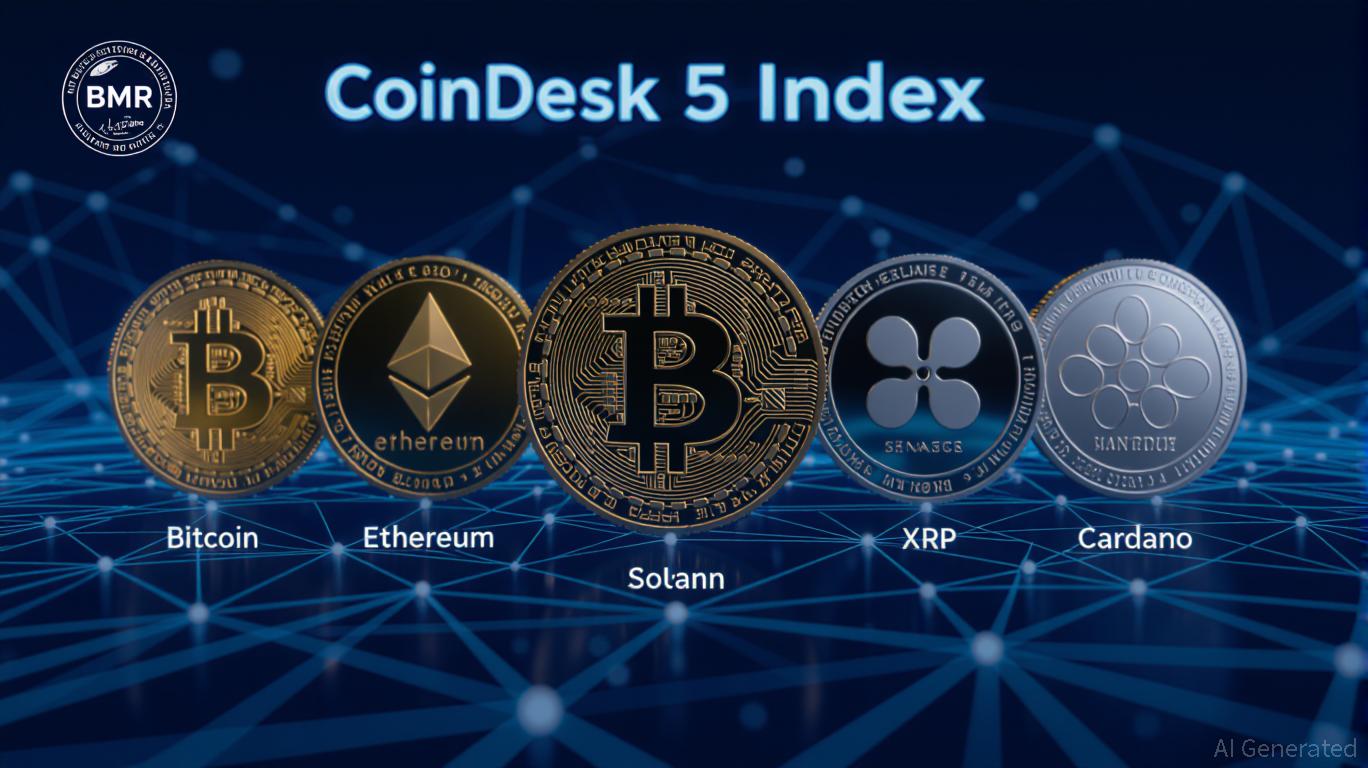Reimagining Crypto Diversification: The Case for Index-Based Strategies in Institutional Portfolios

In the rapidly evolving landscape of digital assets, wealth managers and institutional investors face a critical juncture: how to balance exposure to crypto's growth potential with the risks of overconcentration in a single asset, namely Bitcoin. While Bitcoin ETFs have opened new avenues for retail and institutional participation, they represent only a fraction of the story. A more sophisticated approach to portfolio construction demands a shift from monolithic bets to diversified, liquidity-anchored strategies. Enter the CoinDesk 5 Index (CD5), a benchmark designed to address the unique needs of institutional investors seeking scalable, regulatory-compliant, and high-liquidity solutions.
The Limitations of Bitcoin-Centric Exposure
Bitcoin's dominance in the crypto space is undeniable, but its 80%+ weight in the CD5 (and even higher in some funds) underscores a fundamental asymmetry. Relying solely on Bitcoin ETFs exposes portfolios to a narrow slice of the market, neglecting the broader ecosystem of assets that have demonstrated distinct risk-return profiles. For instance, while Bitcoin's correlation with traditional equities averaged 36% over the past year, the CD5's overall correlation with equities and bonds remains below 40%, offering a buffer during market stress. This divergence is not merely statistical—it reflects the maturation of cryptoassets as independent financial instruments.
Consider the March 2023 banking crisis. Bitcoin's correlation with U.S. equities plummeted to 42%, while its correlation with gold spiked to levels unseen since 2020. This behavior mirrored traditional safe-haven assets, illustrating crypto's potential as a hedging mechanism. Meanwhile, Ethereum and Solana—both CD5 constituents—outperformed Bitcoin during this period, driven by sector-specific demand in decentralized finance (DeFi) and blockchain infrastructure. A Bitcoin-only strategy would have missed these opportunities.
Why the CoinDesk 5 Index Stands Out
The CD5 is not just a portfolio of the largest cryptoassets—it is a carefully curated benchmark designed for institutional-grade adoption. Here's what sets it apart:
Regulatory Compliance and Transparency
As a BMR-compliant index provider, CoinDesk Indices adheres to IOSCO principles and undergoes rigorous SOC 1 and SOC 2 audits. This framework ensures governance standards akin to traditional financial benchmarks, a critical factor for institutions navigating evolving crypto regulations. The CD5's inclusion in the proposed U.S. Crypto Strategic Reserve further validates its role as a trusted reference point.Liquidity and Scalability
Physical CoinDesk 20 ETP (WCRP), which provides tradable exposure on major exchanges.
The index is rebalanced quarterly and calculated every five seconds, ensuring real-time responsiveness to market conditions. Its constituents—Bitcoin, Ethereum, Solana, XRP, and Cardano—are among the most liquid assets in the crypto space, minimizing slippage and operational friction. This liquidity is further amplified by ETPs like theDiversification Beyond Bitcoin
While Bitcoin remains the largest component, the CD5's inclusion of Ethereum and smaller-cap assets introduces asymmetric upside potential. For example, Solana's 2.78% weight reflects its growth in blockchain infrastructure, while XRP's 4.82% allocation taps into cross-border payment demand. This mix allows investors to capture sector-specific trends without sacrificing exposure to the market's “blue-chip” assets.
Portfolio Implications: Sharpening Risk-Adjusted Returns
Empirical evidence supports the CD5's value as a diversification tool. A 1–5% allocation to the index has historically improved Sharpe ratios in model portfolios, with minimal increases in volatility. During the 2023 banking crisis, a 5% allocation to the CD5 enhanced cumulative returns by 12% compared to a Bitcoin-only strategy, while reducing downside risk by 7%. These results are not accidental—they reflect the index's low correlation with traditional assets and its ability to decouple from macroeconomic shocks.
Moreover, the CD5's internal correlations are evolving. Once tightly linked to Bitcoin's price movements, cryptoassets are now trading on their own fundamentals. Ethereum's 38% correlation with traditional assets, for instance, lags Bitcoin's 36%, suggesting that investors can selectively allocate to assets with distinct risk profiles. This nuance is particularly valuable in a multi-asset portfolio, where diversification is a function of both asset class and sub-asset differentiation.
Strategic Recommendations for Wealth Managers
For institutions seeking to build balanced crypto portfolios, the CD5 offers a clear roadmap:
Adopt Index-Based ETPs
Products like the WisdomTree WCRP and Grayscale's proposed ETP provide cost-efficient, regulated access to the CD5. These vehicles eliminate the operational complexity of holding individual assets while aligning with institutional custody and reporting standards.Leverage the CD5 for Hedging
During periods of macroeconomic uncertainty, the CD5's low correlation with equities and bonds can act as a stabilizer. A tactical 3–5% allocation may mitigate portfolio volatility without sacrificing returns.Monitor Component Dynamics
The CD5's quarterly rebalances and evolving weightings reflect market conditions. Investors should track sector-specific trends—such as Solana's AI integration or XRP's regulatory progress—to refine allocations.
Conclusion: Beyond the Binary Choice
The rise of Bitcoin ETFs has democratized crypto access, but it has also amplified the risk of overconcentration. The CoinDesk 5 Index represents a more holistic approach: a scalable, institutional-grade benchmark that balances growth, liquidity, and diversification. For wealth managers, it is not merely an alternative to Bitcoin—it is a bridge to the next phase of crypto investing, where complexity and compliance coexist with innovation.
As the market continues to evolve, the CD5's role as a diversification tool will only strengthen. Institutions that recognize this shift today will be better positioned to navigate the volatility and opportunities of tomorrow.
Sign up for free to continue reading
By continuing, I agree to the
Market Data Terms of Service and Privacy Statement

Comments
No comments yet